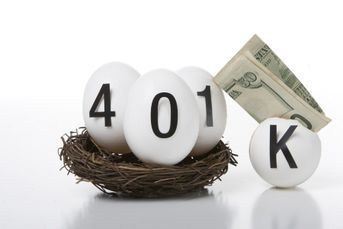In search of the perfect China ETF
New fund seeks to provide exposure to hard-to-access stocks, but watch out for signficant drawbacks
It sounds more like a souped-up race car than a fund: the db X-trackers Harvest CSI 300 China A-Shares Fund (ASHR). As the first exchange-traded fund to give U.S. retail investors exposure to hard-to-access China A shares, which had been available only to Chinese citizens and a few qualified foreign institutions, it’s generating a lot of buzz.
A shares make up roughly two-thirds of the market capitalization of Chinese stocks, so investors in existing China ETFs lack exposure to the majority of Chinese stocks, although some companies have dual listings in China and Hong Kong. The new ETF, which attracted $106 million in assets in four days, tracks the 300 largest companies trading on the mainland Shanghai and Shenzhen exchanges. Previously, investors could only get exposure to Hong Kong or U.S.-listed Chinese companies. While this greater access to Chinese stocks is a welcome development, ASHR and similar ETFs in the works come with significant drawbacks.
One of ASHR’s notable downsides is that it’s expensive. Its annual 1.08% expense ratio is the highest by far of the 30 China ETFs, which have an average expense ratio of 0.63%. In addition, the Shanghai Shenzhen CSI 300 index, on which the ETF is based, has underperformed other investible China indexes such as the S&P China BMI Index. The CSI 300 index returned 67% over the past five years, compared to 106% for the S&P China BMI Index – and that underperformance came with more volatility. In other words, investors would have been better off in an existing broad China ETF.
NO ONE-STOP-SHOP
A big reason for the outperformance of the S&P China BMI index and others like it is that many Chinese technology companies list shares outside of China, and those shares have been red hot. ASHR provides exposure to predominantly financial stocks, with nine out of the top 10 holdings being financial companies.
Issues of expense and underperformance aside, investors still need to buy at least two ETFs to get full exposure to China’s economy. Nearly every other major region and/or country is represented by multiple one-stop-shop broad-market ETFs. In Europe, there’s the Vanguard FTSE Europe (VGK), which tracks 512 stocks from a broad mix of sectors for a dirt-cheap expense ratio of 0.12%. In the U.S., the Schwab U.S. Broad Market ETF (SCHB) tracks 2,000 stocks and happens to be the cheapest ETF at 0.04%, or $4 per $10,000 invested.
The closest thing to an all-encompassing China ETF is the SPDR S&P China ETF (GXC), which tracks all of the many types of investible China shares except A shares. GXC costs 0.59% and tracks 239 stocks. For investors who crave full China exposure and buy into the “own everything” philosophy, the best move is to either marry ASHR and GXC in your portfolio or wait until one of these providers comes out with a show-stopper China ETF that puts it all together in a low-cost package.
NEW RIVALS
Investors will have access to products competing with ASHR in coming months from KraneShares and Market Vectors. Market Vectors already has a product that competes with ASHR — the Market Vectors China ETF (PEK), which provides exposure to China A shares synthetically (meaning through derivatives) by using swaps with Credit Suisse, a qualified purchaser of China A shares. Market Vectors recently announced it will allow PEK to offer physically-based A share exposure, said Amrita Bagaria, ETF product manager at Market Vectors.
For investors who want to learn more about this confusing investment universe, a list of the different types of China shares is below. You can find a comprehensive guide to China ETFs at Index Universe.
China Share Classes:
• A shares: Chinese companies incorporated on the mainland and traded in Shanghai or Shenzhen, quoted in renminbi.
• B shares: Chinese companies incorporated on the mainland and traded in Shanghai and quoted in U.S. dollars, or traded in Shenzhen and quoted in Hong Kong dollars (open to foreign ownership).
• H shares: Chinese companies incorporated on the mainland and traded in Hong Kong.
• Red chips: State-owned Chinese companies incorporated outside the mainland (mostly in Hong Kong) and traded in Hong Kong.
• P chips: Non-state-owned Chinese companies incorporated outside the mainland, most often in foreign jurisdictions such as the Cayman Islands and Bermuda, and traded in Hong Kong.
• N shares: Chinese companies incorporated outside the mainland, most often in certain foreign jurisdictions (see above), and U.S.-listed on the NYSE or Nasdaq (American depositary receipts of H shares and red chips are sometimes referred to as N shares). Yes, there will be a quiz on all of this later.
(Bloomberg News)
Learn more about reprints and licensing for this article.








